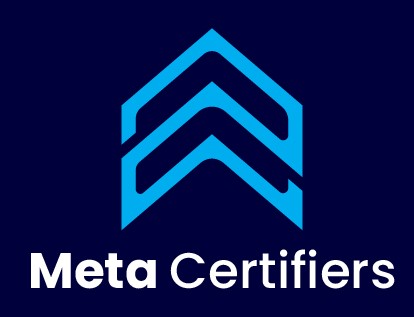Federal Government Announces New HomeBuilder Stimulus Package
As the Australian construction industry continues to navigate the post-pandemic landscape, a pressing question remains: How did the HomeBuilder stimulus package impact residential construction and renovation projects across the country?
The HomeBuilder program, introduced by the Australian government, was a significant initiative aimed at boosting confidence in the residential construction sector during the COVID-19 pandemic. As part of this effort, eligible Australians received substantial homebuilder grants for new home construction and significant renovation projects.
For those who secured approval under the HomeBuilder program, understanding the details of the initiative remains crucial for navigating the requirements for receiving grant payments. Meta Certifiers Pty Ltd, a leading expert in certification services, continues to provide guidance for HomeBuilder recipients, ensuring compliance with construction project requirements.
Key Takeaways
- The HomeBuilder program was a key initiative to support the residential construction sector during the COVID-19 pandemic.
- Eligible Australians received substantial grants for new home construction and significant renovation projects.
- Understanding the program’s details is crucial for approved applicants navigating grant payment requirements.
- Meta Certifiers Pty Ltd provides expert guidance for HomeBuilder recipients.
- The program’s impact continues to be felt in the construction industry.
Understanding the HomeBuilder Stimulus Package
The Australian government introduced the HomeBuilder stimulus package to boost the residential construction sector. This initiative was designed to provide financial incentives to eligible individuals and support the construction industry during a challenging economic period.
Purpose and Objectives of the Program
The primary objective of the HomeBuilder grant was to stimulate economic activity by encouraging investment in residential construction. The program aimed to support middle-income Australians by providing financial assistance for new home constructions, substantial renovations, and off-the-plan purchases. To achieve this, the government set specific eligibility criteria, including income caps and property value limits, to ensure the grant benefited the intended recipients.
Key Features of the HomeBuilder Grant
The HomeBuilder grant offered substantial financial incentives, with two distinct payment tiers. A $25,000 grant was available for eligible contracts signed between June 4, 2020, and December 31, 2020, while a $15,000 grant was available for contracts signed between January 1, 2021, and March 31, 2021. To be eligible, applicants had to meet specific requirements, including being an Australian citizen, meeting income caps ($125,000 for individuals and $200,000 for couples), and using the property as their principal place of residence for at least six months after completion.

The program covered various residential projects, including new home constructions, substantial renovations, and off-the-plan purchases, provided that construction commenced after June 4, 2020. All projects required contracts with registered builders, and strict property value caps were in place to ensure the program’s benefits reached middle-income Australians. The application process was administered by state and territory revenue offices, with funding provided by the federal government through National Partnership Agreements.
Federal Government Announces New HomeBuilder Stimulus Package: Overview
In response to the COVID-19 pandemic’s economic impact, the Australian Government launched the HomeBuilder program, a significant initiative aimed at supporting the residential construction sector.
Initial Announcement and Implementation
The HomeBuilder program was introduced during a period of severe economic uncertainty when consumer confidence had plummeted, and many Australians were delaying or cancelling planned construction projects. The Australian Government designed HomeBuilder as a demand-driven stimulus that would create immediate work for builders, tradespeople, and material suppliers across the country.
Unlike previous stimulus measures that focused on social housing or first-home buyers, HomeBuilder targeted the broader owner-occupier market, including existing homeowners planning renovations. This approach was intended to stimulate the construction industry by encouraging private investment in housing.
Response to COVID-19 Economic Challenges
Economic forecasts in early 2020 predicted a potential 30% decline in residential construction activity, threatening hundreds of thousands of jobs in the building sector and related industries. The HomeBuilder grant was part of a range of initiatives intended to support confidence in the residential construction sector and encourage consumers to proceed with purchases or renovations that may have been delayed due to uncertainty caused by the COVID-19 pandemic.
The program complemented other COVID-19 economic responses, including JobKeeper, increased instant asset write-offs for businesses, and state-based construction initiatives. By encouraging private investment in housing, the government aimed to generate economic activity worth several times the value of the grant through multiplier effects in the economy.
Eligibility Criteria for HomeBuilder Grants
Eligibility for the HomeBuilder grant is determined by several key factors, including applicant identity, income level, and property ownership status. To qualify for the grant, applicants must meet specific requirements related to their individual circumstances and the property in question.
Individual Applicant Requirements
HomeBuilder is available to individual applicants and couples who are or will be registered as the owner on the certificate of title. Each applicant must not have previously received the HomeBuilder Grant for any property owned individually or jointly with another person in any Australian State or Territory.
Income Caps and Citizenship Requirements
Applicants must also meet certain income and citizenship requirements. The program has income caps that applicants must be within to be eligible. Additionally, applicants must be Australian citizens, and in some cases, specific visa holders may also be eligible.
Property Ownership Conditions
The HomeBuilder grant has specific property ownership conditions. Applicants must live in the home as their principal place of residence for a continuous period of at least six months on completion of construction, renovation, or settlement. Investment properties are excluded from HomeBuilder, emphasizing the program’s focus on supporting owner-occupiers rather than property investors.
Key conditions for eligibility include being registered or becoming registered as the owner on the property’s certificate of title, with varying timing requirements based on the construction project type. The program is available to both first-time buyers and existing homeowners who meet all other eligibility criteria. Notably, applicants can only receive the HomeBuilder grant once, whether applying as an individual or as part of a couple.
HomeBuilder Grant Amounts and Timeframes
I will examine the specifics of the HomeBuilder grant amounts and their respective timeframes. The HomeBuilder program was implemented in two phases, each with different grant amounts and eligibility criteria.
$25,000 Grants (June – December 2020)
The initial phase of the HomeBuilder program offered a grant of $25,000 for eligible contracts signed between June 4, 2020, and December 31, 2020. This significant incentive was designed to boost the construction industry during the economic uncertainty caused by the COVID-19 pandemic.
Key features of this phase included:
- Eligible contracts signed between June 4, 2020, and December 31, 2020
- Property value caps applied to ensure the grant benefited those building or renovating homes within certain price ranges
- Renovation contracts valued between $150,000 and $750,000 were eligible
$15,000 Grants (January – March 2021)
The second phase of the HomeBuilder program offered a reduced grant amount of $15,000 for eligible contracts signed between January 1 and March 31, 2021. This extension reflected improving economic conditions while still providing support to the construction industry.
The key aspects of this phase were:
- A reduced grant amount of $15,000
- Increased property value caps to $950,000 for new builds and off-the-plan purchases
- Renovation value requirements remained consistent with the first phase
- All applications had to be submitted by April 14, 2021
It’s worth noting that the program was definitively closed to new applications after April 14, 2021, though extensions were later granted for construction commencement and documentation submission.
Property Value Limits Under HomeBuilder
The HomeBuilder initiative came with specific property value caps that applicants needed to meet to be eligible for the grant. These limits were crucial in ensuring that the program targeted the intended beneficiaries and achieved its objectives.
New Build Value Caps
For new builds, the property value limits under the HomeBuilder program were straightforward. The total value of the land and the new home had to be considered. Although specific caps for new builds were not detailed, the focus was on ensuring that the grant supported the construction of new homes that met certain criteria.
Renovation Value Requirements
For renovation projects, the requirements were more detailed. For contracts signed between 4 June 2020 and 31 December 2020, as well as between 1 January 2021 and 31 March 2021, the renovation contract had to be between $150,000 and $750,000 (inclusive of GST). Moreover, the pre-renovation value of the existing house and land could not exceed $1.5 million.
- Renovation projects had to meet specific value requirements to qualify for the HomeBuilder grant.
- The renovation contract value was required to be between $150,000 and $750,000 (inclusive of GST).
- The pre-renovation value of the house and land was capped at $1.5 million.
- These requirements aimed to support substantial renovations that improved accessibility, safety, or liveability.
By setting these value limits, the HomeBuilder program ensured that the grants were used for significant renovations rather than minor cosmetic updates. This approach helped in achieving the program’s goal of stimulating the construction sector while enhancing the quality of residential properties.
Types of Eligible Construction Projects
Eligible construction projects under the HomeBuilder scheme included new home construction, substantial renovations, and off-the-plan purchases. The program was designed to support various aspects of the construction industry, thereby stimulating economic activity.
New Home Construction
New home construction was a primary focus of the HomeBuilder program. To be eligible, the construction had to commence within specific timeframes: between 4 June 2020 and 31 December 2020, or between 1 January 2021 and 31 March 2021. The contract price for the construction of a new home was capped at $750,000 (inclusive of GST) for contracts signed in 2020, and $950,000 for contracts signed in early 2021.
Substantial Renovations
Substantial renovations were also eligible under the HomeBuilder scheme. These renovations had to be undertaken on an existing home, which was the applicant’s principal place of residence. The renovation costs had to be between $150,000 and $750,000 (inclusive of GST) for contracts signed between 4 June 2020 and 31 December 2020, or between $150,000 and $950,000 for contracts signed between 1 January 2021 and 31 March 2021.
Off-the-Plan Purchases
Off-the-plan purchases were another category of eligible projects. These included apartments and townhouses, in addition to standalone homes. The contract price for off-the-plan purchases was subject to the same value caps as new home constructions. Notably, construction could have commenced before the contract date, but not before 4 June 2020.
The following table summarizes the key features of eligible construction projects under the HomeBuilder scheme:
| Project Type | Contract Price Cap (2020) | Contract Price Cap (2021) | Construction Commencement |
|---|---|---|---|
| New Home Construction | $750,000 | $950,000 | Within months of contract |
| Substantial Renovations | $150,000 – $750,000 | $150,000 – $950,000 | Within months of contract |
| Off-the-Plan Purchases | $750,000 | $950,000 | Not prior to 4 June 2020 |
Construction Commencement Extensions
On April 17, 2021, the government revealed an extension to the construction commencement requirement for HomeBuilder grants. This change was a significant relief for many recipients who were facing challenges in meeting the original timeframe.
The original construction commencement requirement was a critical aspect of the HomeBuilder program. Initially, applicants were required to commence construction within 6 months of signing a contract. This timeframe was considered tight, given the complexities involved in construction projects.
Original Timeframe Requirements
The initial 6-month requirement applied to all contracts signed between June 4, 2020, and March 31, 2021. This meant that projects had to be underway within a relatively short period, which posed challenges for many builders due to supply chain issues and labor shortages.
Extended 18-Month Provision
The government extended the construction commencement timeframe to 18 months for eligible contracts. This change was made in response to industry feedback regarding capacity constraints and approval delays. The extension applied to contracts signed between June 4, 2020, and March 31, 2021, allowing projects to commence by late 2022 or late 2023, depending on the contract date.
| Contract Signed Date | Original Timeframe | Extended Timeframe |
|---|---|---|
| June 4, 2020 – March 31, 2021 | 6 months | 18 months |
The extension was formalized through amendments to the National Partnership Agreement, providing substantial relief to grant recipients and helping to alleviate pressure on builders facing unprecedented demand and material shortages.
Documentation Submission Deadlines
A major development in the HomeBuilder program is the extension of the documentation submission deadline from April 30, 2023, to June 30, 2025. This change was announced on April 27, 2023, by the former Minister for Housing, Homelessness and Small Business, the Hon Julie Collins MP, through a revised National Partnership Agreement on HomeBuilder.
Original Submission Requirements
Initially, the deadline for submitting supporting documentation was set as April 30, 2023. This timeframe was established to ensure that recipients of the HomeBuilder grant completed their projects and submitted necessary documentation in a timely manner. However, various factors, including construction delays and external challenges, affected the ability of many recipients to meet this deadline.
Extended Deadline to June 2025
The two-year extension to June 30, 2025, was a response to the ongoing construction delays experienced by HomeBuilder recipients across Australia. The extension was formalized through the revised National Partnership Agreement, signed by all states and territories. This change provided crucial relief for grant recipients facing delays due to factors such as builder bankruptcies, material shortages, and extreme weather events. Despite this extension, other HomeBuilder terms and conditions remained unchanged, including the requirement for construction to commence within 18 months of the contract date.
The extension acknowledged that while many projects had commenced construction within the required timeframes, completion and final documentation were taking significantly longer than anticipated. This adjustment by the government demonstrated a commitment to supporting HomeBuilder recipients through challenging circumstances.
Special Provisions for Bushfire-Affected Properties
The HomeBuilder initiative provided relief measures for individuals whose properties were damaged or destroyed in the 2019/20 bushfires. To support these applicants, special provisions were made to facilitate their access to the grant.
Eligibility for 2019/20 Bushfire Victims
Bushfire-affected applicants were subject to modified documentation requirements, acknowledging their unique circumstances. To be eligible, applicants needed to demonstrate that their property was affected by the 2019/20 bushfires.
Documentation Requirements for Bushfire Claims
Instead of requiring a formal property valuation, Revenue NSW accepted the latest available land valuation issued by the NSW Valuer General, which can be accessed for free from their website. Applicants were also required to provide evidence that their home was bushfire-affected, such as a letter from their insurance company or documentation from a government agency.
The application process recognized that many bushfire victims had lost important documentation in the fires and offered flexibility in verification requirements. While standard HomeBuilder contracts were still required, authorities provided additional guidance for bushfire victims navigating both disaster recovery and the grant application process.
| Documentation Type | Standard Requirement | Bushfire-Affected Provision |
|---|---|---|
| Property Valuation | Bank or licensed independent valuer | NSW Valuer General’s land valuation |
| Evidence of Damage | Not applicable | Insurance company letter or government agency documentation |
| Contract Requirements | Standard HomeBuilder contracts | Additional guidance provided for bushfire victims |
Farming Property Considerations
Farming properties presented specific valuation challenges under the HomeBuilder grant scheme. The unique nature of these properties required a tailored approach to determining their value for the purpose of the grant application.
Valuation Approach for Farming Properties
For farming properties, the valuation process involved special considerations. To support their application, farm owners were required to provide a covering letter confirming that their property was a genuine farming operation. This letter was crucial in establishing the legitimacy of the property’s valuation.
Required Documentation for Farm Owners
Farm owners needed to submit several documents to support their HomeBuilder grant application. These included either an independent valuation of the dwelling based on replacement cost or insurance documents showing the insured value of the home. Additionally, the property’s rate notice was required to establish ownership and provide context about the overall property. Standard eligibility documentation, such as proof of income through Australian Taxation Office notices of assessment, was also necessary. The application process was assessed on a case-by-case basis, with authorities sometimes requesting additional documentation to verify the property’s status as a genuine farming operation.
- Farm owners were required to provide a covering letter confirming their property was a genuine farming property.
- An independent valuation or insurance documents showing the dwelling’s value were necessary.
- The property’s rate notice was required to establish ownership.
- Standard eligibility documentation, including proof of income, was still required.
HomeBuilder Program Impact in Australia
With its far-reaching effects, the HomeBuilder program has supported the Australian economy during challenging times. As part of a broader initiative to stimulate the residential construction sector, HomeBuilder has played a crucial role in maintaining economic activity.
State-by-State Grant Distribution
The distribution of HomeBuilder grants has varied across different states in Australia, reflecting regional differences in housing markets and construction activity. The program’s implementation under the National Partnership Agreement framework allowed for state-specific adjustments, ensuring that local conditions were addressed effectively.
| State | Number of Grants | Total Amount ($) |
|---|---|---|
| New South Wales | 100,000 | 2.5 billion |
| Victoria | 80,000 | 2 billion |
| Queensland | 70,000 | 1.75 billion |
Economic Benefits and Construction Sector Support
The HomeBuilder program has delivered substantial economic benefits, generating an estimated $18 billion in residential construction activity. Industry analysis indicates that each HomeBuilder grant supported an average of 3-5 full-time equivalent jobs in construction and related industries. By targeting owner-occupiers, the program ensured that economic benefits flowed to middle-income Australians, supporting the construction sector during a period of significant uncertainty.
The program’s impact was crucial in preventing a projected 30% decline in residential construction activity, which would have resulted in widespread job losses and business closures. The timely introduction of the HomeBuilder grant provided certainty and maintained construction activity when other sectors were experiencing downturns.
Common Challenges with HomeBuilder Applications
The HomeBuilder initiative, though well-intentioned, was not without its application complexities. Applicants encountered various obstacles that affected their ability to successfully secure grants.
Documentation and Compliance Issues
One of the primary challenges faced by applicants was related to documentation and compliance. Ensuring that all required documents were submitted correctly and on time was crucial. Meta Certifiers Pty Ltd, with their expertise and guidance, helped clients navigate these requirements, ensuring compliance with the program’s conditions.
Some of the common documentation issues included:
- Incomplete or inaccurate application forms
- Insufficient proof of income or identity
- Failure to meet property ownership conditions
Timeframe and Deadline Complications
The HomeBuilder program’s tight timeframes created significant challenges, particularly the original three-month construction commencement requirement. Even after the extension to 18 months, many projects faced delays due to unprecedented demand in the construction sector.
| Period | Application Volume | Common Issues |
|---|---|---|
| November 2020 – March 2021 | High | Material shortages, price increases |
| After March 2021 | Moderate | Builder capacity constraints, scheduling delays |
Meta Certifiers Pty Ltd (1300 740 378, [email protected]) provided crucial guidance to clients navigating these timeframe complications, helping them understand how construction commencement was officially defined and documented for compliance purposes.
How Meta Certifiers Can Assist with HomeBuilder Projects
Meta Certifiers specializes in providing tailored advice for HomeBuilder projects, helping clients meet all necessary requirements. With their expertise, homeowners can ensure their projects comply with the program’s conditions.
Expert Guidance on Documentation Requirements
Meta Certifiers Pty Ltd, located at 1/25 Padstow Pde, Padstow NSW 2211, offers expert verification of construction commencement for contracts signed June 2020 and March 2021. For projects with contracts signed between June and November 2020, they help verify that builders held valid licenses before June 4, 2020, as required.
Their team provides comprehensive guidance on documentation requirements, ensuring that clients are well-prepared for the submission process. This includes verifying that all necessary documents are in order and that they meet the specific conditions set out by the HomeBuilder program.
Ensuring Compliance with HomeBuilder Conditions
Meta Certifiers’ certification professionals conduct thorough inspections to document compliance with HomeBuilder conditions. They assist clients in preparing the necessary documentation for submission before the June 2025 deadline.
Homeowners can contact Meta Certifiers at 1300 740 378 or [email protected] to discuss their specific HomeBuilder compliance requirements and receive tailored advice for their project. By leveraging Meta Certifiers’ expertise, homeowners can navigate the complexities of the HomeBuilder program with confidence.
Next Steps for HomeBuilder Recipients
The next steps for HomeBuilder recipients are crucial in ensuring they receive their grants without complications. To achieve this, recipients should focus on completing their construction projects and gathering all required documentation before the June 2025 submission deadline.
Essential documentation includes proof of the first progress payment made to builders, completion certificates, and occupancy permits where applicable. Maintaining detailed records of all construction milestones and payments is also vital to support final grant verification. For guidance on certification requirements, recipients can contact Meta Certifiers Pty Ltd at [email protected] or visit their office at 1/25 Padstow Pde, Padstow NSW 2211.





